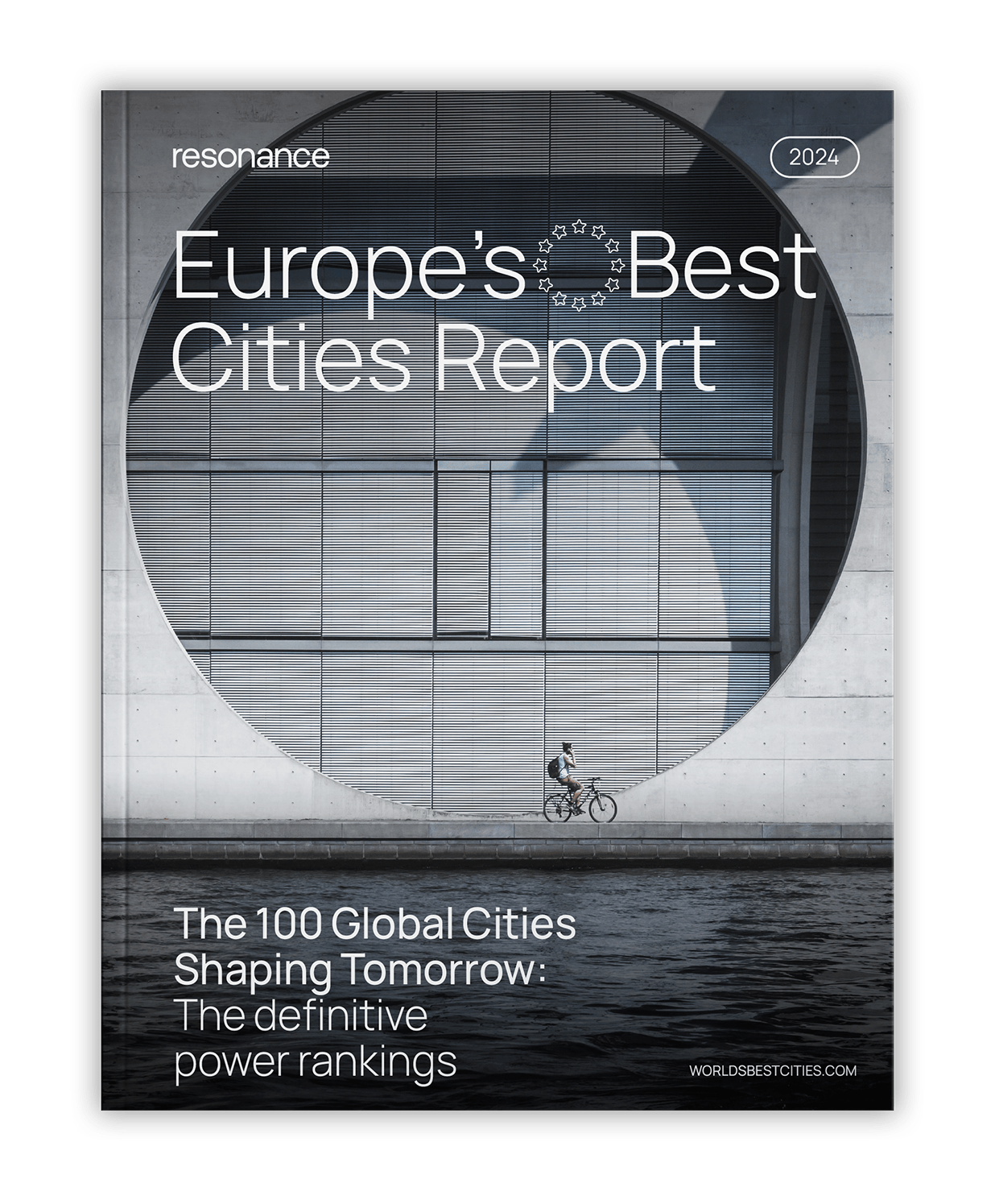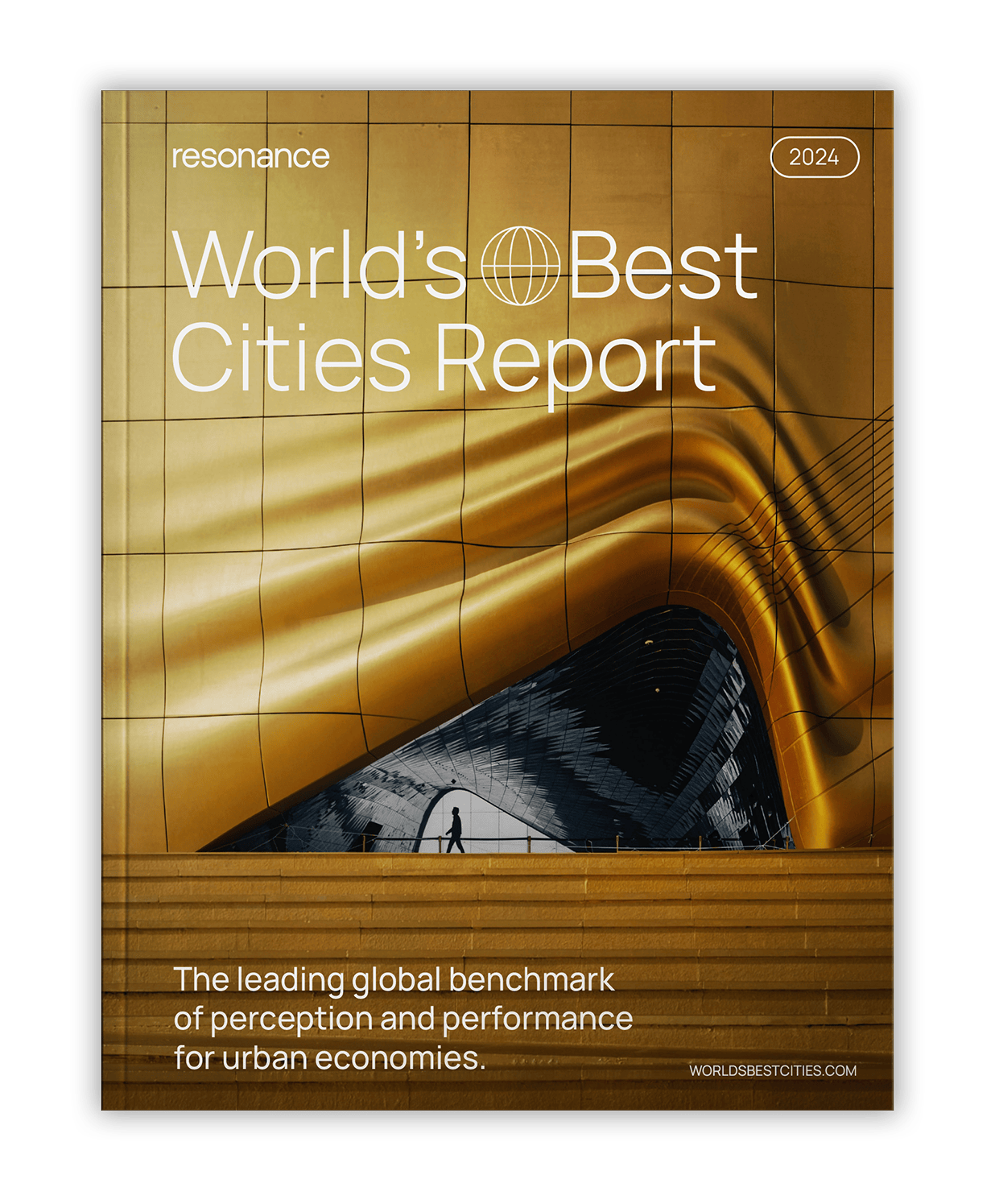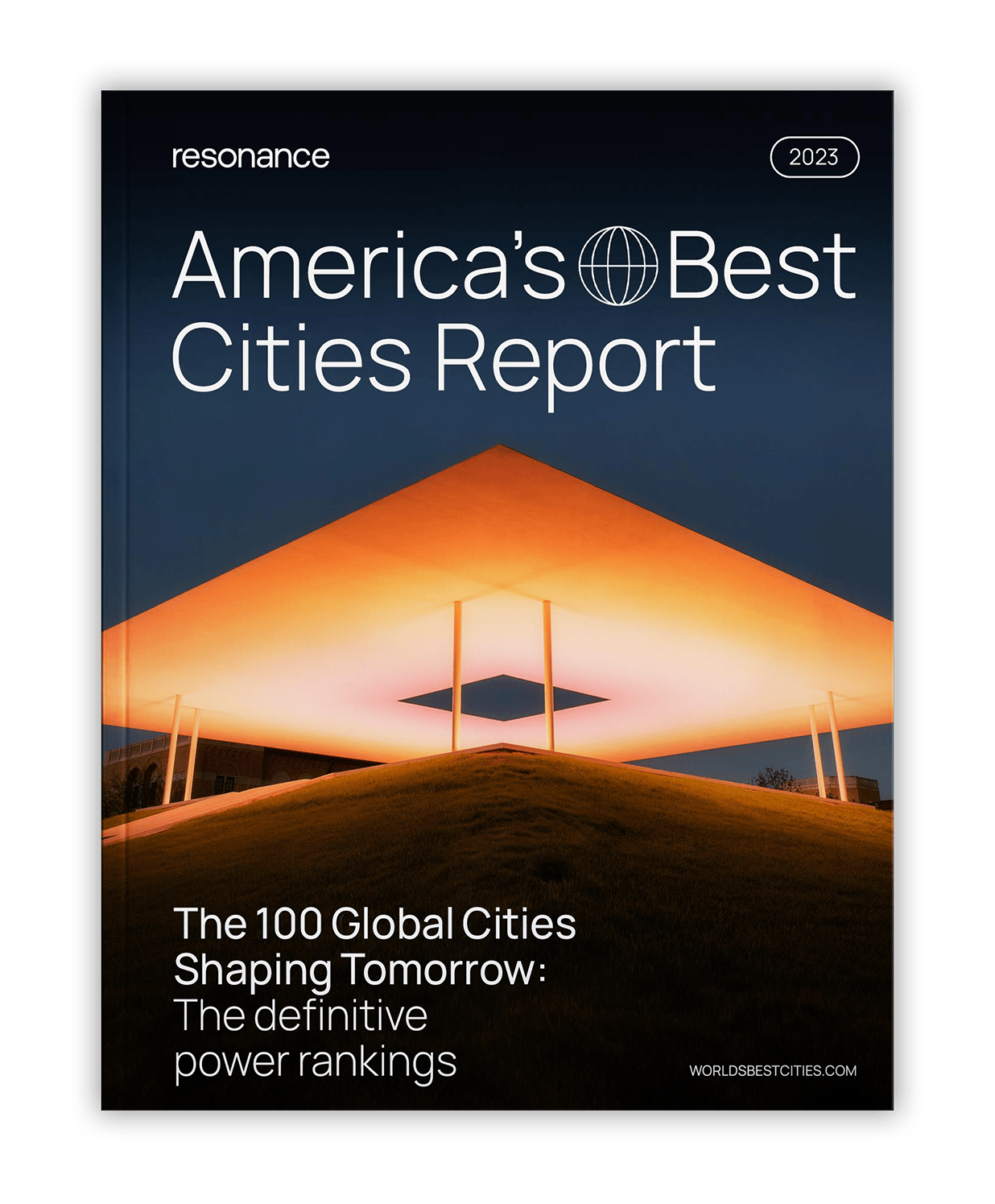and performance for urban economies.
The World’s Best Cities rankings are the most credible source of city performance in the eyes of visitors, investors and residents alike.
The most trusted rankings of the world’s top urban destinations.
Download the free PDF reports, updated annually.
Our methodology is a combination of core statistics from more than 500 global cities a, as well as resident and visitor perception indicators like user-generated ratings and reviews.
Resonance interprets this data through the lens of three key factors—Livability, Lovability and Prosperity—to define each city’s Place Power© Score.
Meet the smarts and passion dedicated to realizing the potential of cities.
World’s Best Cities is a proprietary benchmarking methodology creative by Resonance, a leading advisor in tourism, real estate and economic development. The rankings, now in their 10th year, span three annual rankings (World’s, America’s and Europe’s Best Cities) and are determined by analyzing the performance of each city for a wide range of factors that have demonstrated moderate to strong correlations with attracting employment, investment and/or visitors. We call it the Place Power© Score and we apply the same proprietary performance measurement to our global clients, ranging from communities, to cities, regions and countries.
—Bloomberg



